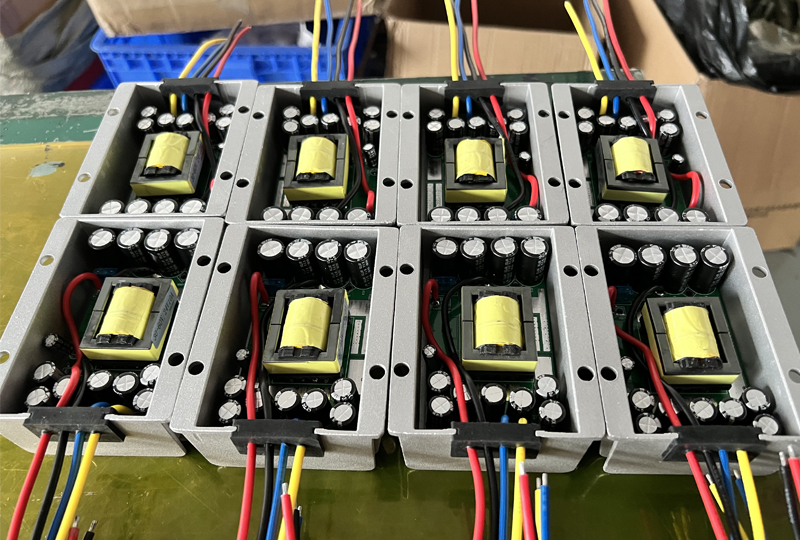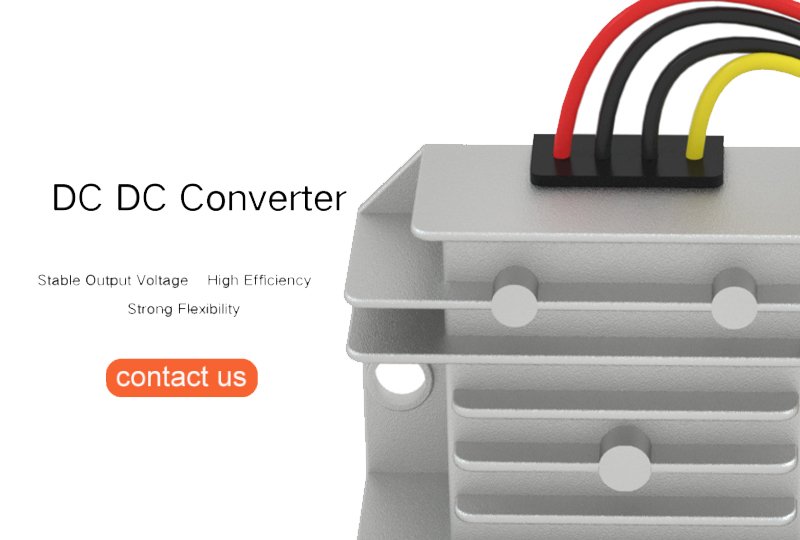Series connection of DC power supplies
Power supply series connection is a connection method in which the positive and negative poles of two or more power supplies are connected in sequence.

Principle of power supply series connection
When power supplies are connected in series, the total electromotive force is equal to the sum of the electromotive forces of each power supply. For example, there are two power supplies with electromotive forces E1 and E2 respectively.
After series connection, the total electromotive force E=E1+E2. At the same time, the total internal resistance is also equal to the sum of the internal resistances of each power supply. Because the current is equal everywhere in the series circuit, the current passing through the load is determined by the total electromotive force and the total internal resistance.
The role of power supply series connection
Increase voltage When the voltage of a single power supply cannot meet the load requirements, the total voltage can be increased by connecting multiple power supplies in series. For example, some electronic devices that require high voltage drive, such as some high-voltage discharge devices, can use multiple batteries in series to obtain the required high voltage.
Increase power supply capacity Although series connection cannot directly increase the capacity (ampere-hour) of the power supply, it can improve the power supply's ability to drive high-power loads to a certain extent. This is because high voltage can produce greater power output under the same load.
Precautions for power supply series connection
Consistency of power supply The power supplies in series should have the same type, specifications and performance parameters as much as possible. If the electromotive force, internal resistance, etc. of the power supply are greatly different, some power supplies may be over-discharged or under-charged, affecting the performance and life of the entire power supply system.
For example, in a series battery pack, if the capacity of individual batteries is small or the internal resistance is large, they may reach the limit state before other batteries during the charging and discharging process, thus affecting the performance of the entire battery pack.
Correctness of connection
When connecting power supplies in series, the polarity of each power supply should be carefully checked and connected in the correct order to ensure that the positive and negative poles of the power supply are connected correctly, otherwise it will lead to serious consequences such as short circuit.
Overvoltage protection Since the total voltage increases after series connection, it is necessary to consider the load's voltage resistance and whether an overvoltage protection device needs to be set.
For example, in some voltage-sensitive electronic circuits, overvoltage protection components such as voltage-stabilizing diodes and varistors should be installed to prevent excessive voltage from damaging the load.
Parallel connection of direct current power supply
Parallel connection of power supplies is a connection method in which the positive poles of two or more power supplies are connected together, and the negative poles are connected together.
Principle of power supply parallel connection
When power supplies are connected in parallel, the total electromotive force is equal to the electromotive force of a single power supply. The reciprocal of the total internal resistance is equal to the sum of the reciprocals of the internal resistances of each power supply, that is, the internal resistance decreases after parallel connection.
The total current is equal to the sum of the output currents of each power supply. According to Ohm's law, under the same load, the power supply system after parallel connection can provide a larger current.
The role of power supply parallel connection
Increase current output capacity When a single power supply cannot provide a large enough current to meet the load requirements, the total current output can be increased by connecting multiple power supplies in parallel. For example, in some high-power electronic equipment, such as the power supply system of a server room, multiple power supplies are usually connected in parallel to ensure sufficient current supply.
Improve reliability If one of the power supplies fails, the other power supplies can continue to supply power to the load, thereby improving the reliability of the power supply system. For example, in some critical industrial control systems, redundant power supplies are connected in parallel. When one power supply fails, the system can automatically switch to other normal power supplies to ensure the continuous operation of the system.
Precautions for power supply parallel connection
Power supply consistency Parallel power supplies should have the same electromotive force and similar internal resistance. If the electromotive force of the power supply is very different, it will cause the generation of circulating current, increase power loss, and even damage the power supply.
Different internal resistance will also make the output current distribution of each power supply uneven, affecting the service life of the power supply. For example, in a parallel battery pack, batteries of the same batch and model should be selected to ensure that their performance parameters are as consistent as possible.
Correctness of connection When connecting power supplies in parallel, carefully check the connection lines to ensure that the connection is firm and reliable, and ensure that the positive and negative poles of the power supply are connected correctly to avoid short circuits.
Protection devices In order to prevent overcurrent, short circuit and other faults from damaging the power supply and load, appropriate protection devices such as fuses and circuit breakers should be installed in the parallel power supply system. For example, when a short circuit occurs, the circuit breaker can quickly cut off the circuit to protect the power supply and load equipment.







